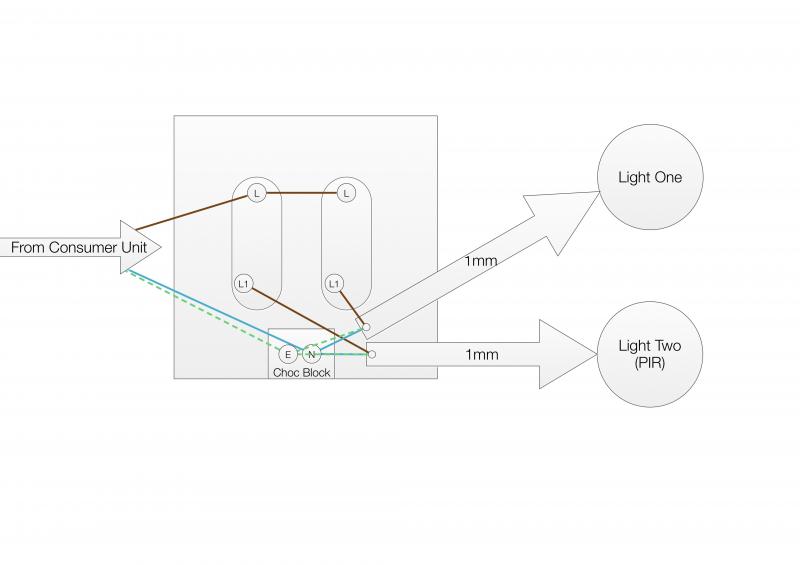It's for my shed, not sure if this is an acceptable wiring setup so I've put together a quick diagram for you guys to advise.
Two gang switch running two lights (one inside, one PIR) and no need to continue the circuit. I've presumed it's OK to Choc block in the switch as per the diagram. No earth terminal in the plastic back box.
Two gang switch running two lights (one inside, one PIR) and no need to continue the circuit. I've presumed it's OK to Choc block in the switch as per the diagram. No earth terminal in the plastic back box.


